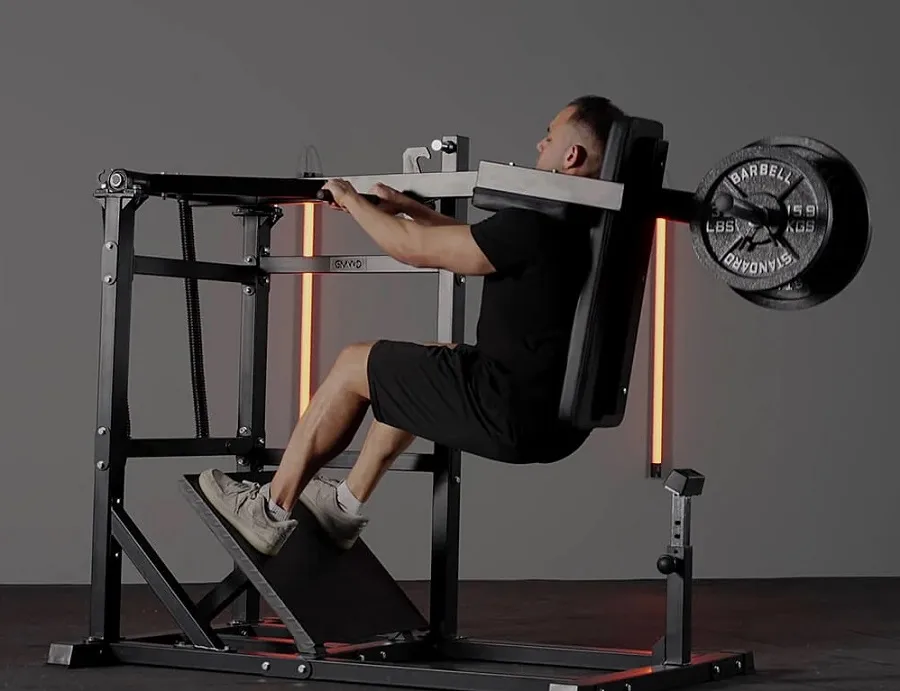Pendulum squats are an innovative addition to the world of fitness that can transform your workout routine. As a variation of traditional squats, they offer unique benefits that make them worth exploring. Squats, in general, are fundamental exercises that strengthen the lower body, improve mobility, and enhance athletic performance. In this guide, we’ll delve into the specifics of pendulum squats, discussing their technique, benefits, and how they compare to other squat variations. Whether you’re a beginner or a seasoned athlete, this article has something for everyone.
What is a Pendulum Squat?
Definition and Description
A pendulum squat is a dynamic exercise that mimics the motion of a pendulum, focusing on engaging the lower body through a smooth, swinging motion. This squat variation emphasizes stability and control, making it an excellent choice for building strength and coordination.
Comparison with Other Squat Variations
Unlike traditional squats that rely solely on your body weight or external weights, pendulum squats incorporate a swinging motion that adds an element of instability. This challenges your core and stabilizing muscles more than standard squats, enhancing overall muscle engagement.
Benefits of Pendulum Squats
Muscle Groups Targeted
Pendulum squats primarily target the quadriceps, glutes, and hamstrings. They also engage your core and stabilizer muscles, providing a full-body workout.
Advantages Over Traditional Squats
The swinging motion of pendulum squats allows for greater range of motion and muscle activation compared to traditional squats. This can lead to improved strength and flexibility.
Benefits for Different Fitness Goals
- Strength: By incorporating weights, you can significantly increase the intensity.
- Hypertrophy: The unique movement can promote muscle growth by targeting fibers differently.
- Endurance: Higher repetitions with lighter weights can enhance muscular endurance.
How to Perform a Pendulum Squat
Step-by-Step Guide
- Start Position: Stand with your feet shoulder-width apart, holding a weight in front of you (if applicable).
- Initiate the Movement: Shift your weight back onto your heels and bend your knees, lowering your body into a squat.
- Pendulum Motion: As you lower down, swing the weight slightly back, then drive up through your heels and return to the starting position.
- Repeat: Perform 10-15 repetitions, focusing on smooth movements.
Common Mistakes to Avoid
- Leaning Forward: Maintain an upright torso to prevent strain on your back.
- Rounding the Back: Keep your spine neutral throughout the movement.
- Not Engaging Core: Activate your core to stabilize your body during the swing.
Tips for Proper Form and Technique
- Use a mirror or record yourself to ensure correct form.
- Start with lighter weights to master the technique before increasing the load.
Variations and Modifications
Different Ways to Perform Pendulum Squats
- Weighted Pendulum Squats: Add dumbbells or a kettlebell to increase intensity.
- Resistance Band Pendulum Squats: Use bands for added resistance and variety.
Modifications for Beginners and Advanced Athletes
- Beginners: Start without weights or perform the movement to a chair for support.
- Advanced: Increase the range of motion or combine with other exercises for a full circuit.
Incorporating Pendulum Squats into Workout Routines
Integrate pendulum squats into lower body workouts or as part of a circuit training session for a comprehensive workout.
Pendulum Squat vs. Other Squat Variations
Comparison with Other Squat Variations
- Traditional Squats: Focus on basic lower body strength but may not engage core stability as much.
- Goblet Squats: Great for beginners, but less dynamic than pendulum squats.
- Hack Squats: Offer a machine-based alternative, focusing more on quads.
Pros and Cons of Each Variation
| Variation | Pros | Cons |
|---|---|---|
| Pendulum Squat | Enhanced stability, dynamic motion | May require more coordination |
| Traditional Squat | Easy to learn, good for strength | Less core engagement |
| Goblet Squat | Good for form, engages upper body | Limited motion compared to pendulum |
| Hack Squat | Isolates quads effectively | Less functional for overall fitness |
When to Choose Pendulum Squats Over Other Types
Opt for pendulum squats when looking to improve stability, coordination, and core strength while targeting the lower body.
Section 6: Frequently Asked Questions (FAQs)
Common Questions About Pendulum Squats
Q: Are pendulum squats suitable for beginners?
A: Yes, beginners can start without weights to master the technique.
Q: How often should I incorporate pendulum squats into my routine?
A: Aim for 1-2 times per week, allowing recovery between sessions.
Q: Can pendulum squats help with flexibility?
A: Yes, the range of motion involved can improve flexibility over time.
Conclusion
Pendulum squats are an excellent addition to any fitness regimen, offering unique benefits that enhance strength, stability, and coordination. By incorporating this dynamic exercise into your workouts, you can take your lower body training to the next level. Don’t hesitate to experiment with variations and modifications to find what works best for you.
Ready to try pendulum squats? Share this article, leave a comment, and let us know how they work for you!
